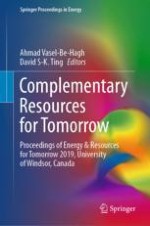2020 | Book
Complementary Resources for Tomorrow
Proceedings of Energy & Resources for Tomorrow 2019, University of Windsor, Canada
Editors: Ahmad Vasel-Be-Hagh, Dr. David S-K. Ting
Publisher: Springer International Publishing
Book Series : Springer Proceedings in Energy
